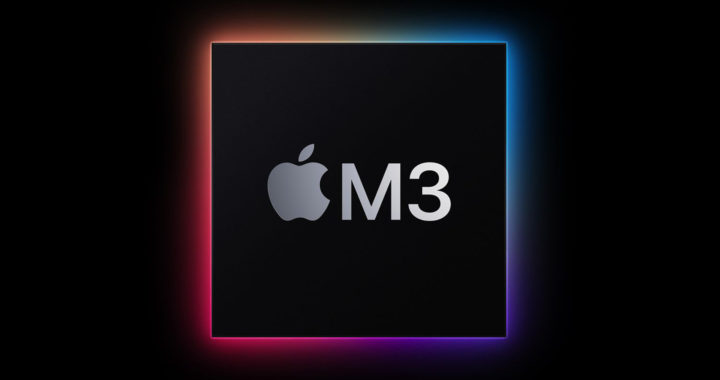The announcement of the third generation of Apple M Series chips on 30 October 2023 demonstrates further the continued push of Apple to implement its semiconductor strategy. This iteration of the M-series system-on-a-chip includes the standard or base Apple M3, the Apple M3 Pro, and the Apple M3 Max. The base chip is set to replace the Apple M1 and Apple M2 chips and it powers the newer generation of the iMac and the 14-inch and 16-inch MacBook Pro, and newer generations of the MacBook line and iPad Air and iPad Pro line.
What is New with the Apple M3 Chip and How Does It Different from the Apple M1 and Apple M2 Chips?
First PC Chip Based on the 3nm Process Technology
The M3 family is the first chips for personal computers in the world to use the 3nm process technology based on the newer manufacturing technology of TSMC. This means that it packs more transistors than the previous generations of the Apple M Series to deliver significant improvements in terms of processing capabilities and power consumption.
Both the Apple M1 and Apple M2 were based on the 5nm process technology of TSMC. The 3nm process is a superior manufacturing technology because it allows transistors to be packed into a smaller space. A chip or a system-on-a-chip with a denser transistor count is theoretically faster and more efficient than counterparts with lesser transistor counts.
Hence, when compared to the 16-billion transistor count of the base Apple M1 and the 20-billion transistor count of the Apple M2 chips, the base Apple M3 has 25 billion transistors. This transistor density allows Apple to fit in an improved 8-core CPU, a better 10-core integrated GPU, and improved coprocessors and other hardware components.
Improved Processing Capabilities and Power Efficiency
It is important to highlight the fact that another improvement with the Apple M3 chip is its better processing capabilities at better power efficiency. Apple notes that this chip can deliver the same graphics processing performance as the Apple M1 while using about half the power. It is also 65 percent faster in peak graphics performance than the Apple M1.
The 8-core CPU is based on the big.LITTLE architecture of the ARM architecture is composed of 4 performance cores and 4 efficiency cores. It is 35 percent faster than the CPU of the Apple M1. Take note that the Apple M2 has general compute capabilities that are about 12 to 20 percent faster than the general compute performance of the Apple M1.
Ray Tracing, Mesh Shading, and Dynamic Caching
Remember that the integrated GPU of this chip is better than the GPUs of the Apple M1 and Apple M2. This comes from a newer architecture that involves integrating hardware-accelerated ray tracing and mesh shading. This is the first time in an Apple chip for a PC and the second time since the Apple A17 Pro chip for the iPhone 15 Pro and iPhone 15 Pro Max.
Take note that hardware-accelerated ray tracing is a common feature found in mid-range and premium integrated graphics and discrete graphics processors from Nvidia and AMD. Ray tracing mimics the properties of light while mesh shading allows the processing of polygons. These two result in a more realistic graphics rendering.
Another improvement in the Apple M3 is Dynamic Caching. This feature enables the allocation of the use of local memory in hardware in real-time. It specifically ensures that only the exact amount of memory needed is used for each time. Dynamic Caching provides significant increases in the performance of the GPU for apps and games.
Enhanced Neural Engine Advanced Media Engine
The Neural Engine has been a mainstay in Apple chips since it was introduced in the Apple A11 Bionic chip in 2017. The Apple M3 still has the same 16-core Neural Engine configuration but has better TOPS for faster acceleration of artificial intelligence and machine learning models and workloads. It is specifically up to 60 percent faster than the Neural Engine in the Apple M1.
Furthermore, on top of a dedicated AI accelerator, this chip also has an advanced media engine that promises to deliver better hardware acceleration of the most popular video codecs. Supported codes include H.264, HEVC, ProRes, and ProRes RAW. The media engine also supports AV1 decoding for power-efficient video streaming.
Conclusion and Important Takeaways: New Features and Capabilities of the Apple M3 System-on-a-Chip
The aforementioned improvements in the Apple M3 make it one of the best and fastest chips designed by Apple. It has notable improvements over the base Apple M1 and M2 chips that are focused more on better graphics-processing capabilities. Equipped devices become more capable of running creativity applications for photo editing and video editing. Furthermore, because of the improved integrated GPU and overall CPU performance, the prospect of PC gaming on a macOS and an ARM-based computer system becomes more possible. It is still important to note that the Pro and Max versions of the M3 family of chips provide better general computing, graphics processing, and accelerating processing or coprocessing capabilities.

